Source: Coin Market Trader
After the Federal Reserve cut interest rates by 50 basis points beyond expectations, the global capital market ushered in a historic turning point. Since September 18, global stock markets have continued to rise sharply, with the Shanghai Composite Index soaring 11.8% in four trading days, breaking the four-day increase record in the past 10 years. The hot market even caused the Shanghai Stock Exchange to shut down. Unlike the previous investment style that favored "big and beautiful", small and medium-sized stocks performed particularly well in this round of gains. The Wind market terminal shows that from September 18 to 27, the S&P 500 index excluding the top ten stocks by market value rose significantly more than the overall index, and the A-share ChiNext Index rose nearly 50% higher than the Shanghai Composite Index. It is worth noting that although Bitcoin has performed tepidly recently, Altcoin in the fields of AI, MOVE public chain, chain games and MEME are extremely popular. These phenomena show that as the Federal Reserve enters a cycle of interest rate cuts, the focus of funds has gradually shifted from absolute value to price elasticity.
Small-cap stocks generally outperform large-cap stocks during interest rate cut cycles. According to Jefferies data, since 1950, after the first rate cut by the Federal Reserve, the average gains of small-cap stocks in 3, 6 and 12 months were 11%, 15% and 28%, respectively, all higher than the 5%, 10% and 15% of large-cap stocks. There are two main reasons for the better performance of small-cap stocks:
1. Small businesses generally have higher debt levels than large companies. Interest rate cuts can help reduce borrowing costs, which means reduced financial costs and higher profit margins for small companies that rely on bank loans and floating rate debt.
2. The downward trend in interest rates has reduced the attractiveness of fixed-income financial products such as bonds and bank deposits, thereby driving funds to flow into high-risk and high-yield assets, ultimately leading to a continuous increase in market risk appetite.
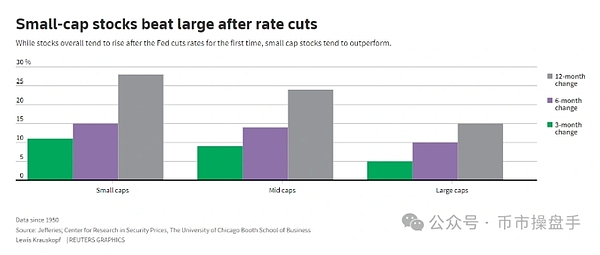
In fact, in the last round of interest rate cuts, the market capitalization of Altcoin increased from 6.07% to 17.37%, an increase of 186%. If the historical rules are still valid, Altcoin are likely to perform well in this round of interest rate cuts.
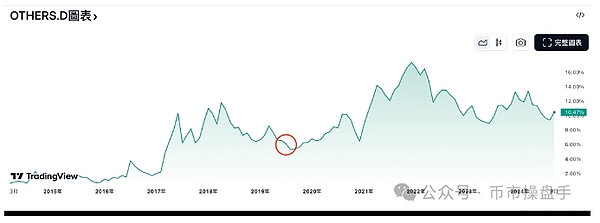
Although investing in Altcoin is more likely to generate excess returns, Bitcoin is still the best strategy to win in a rate cut cycle. According to SoSoValue data, Bitcoin ETFs have begun to resume inflows since September 9. By September 27, the single-day net inflow of Bitcoin ETFs reached US$494 million, almost returning to the level of the strongest inflows in the first quarter. At the same time, Microstrategy, the listed company with the most Bitcoin holdings, saw a cumulative increase of 55% in its stock price between September 6 and September 27, while the Nasdaq and S&P 500 increased by 8.7% and 7.6% respectively during the same period. Although Microstrategy's Q2 financial report shows that the company's main business is still sluggish and revenue and profits are facing downward pressure, the secondary market is confident that Microstrategy will transform into a Bitcoin investment fund.
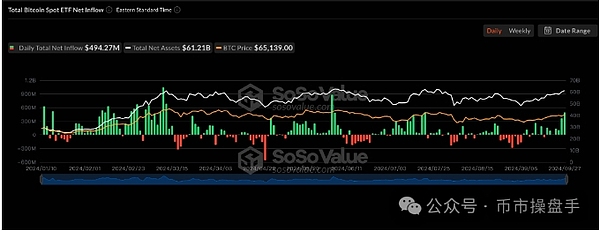
According to industry research data from Bloomberg, the MicroStrategy 2X Leveraged ETF issued by REX Shares and Tuttle Capital Management received a large net inflow of US$72 million in its first week of listing, becoming one of the best performing newly issued ETFs in the market. The previously launched 1.75X Long MicroStrategy ETF (MSTX) has attracted approximately US$857 million since August 15, and its ability to attract funds ranks in the top 8% among many ETFs. Almost every leveraged fund linked to MSTR has become a popular choice in the market. According to data disclosed by the exchange, retail investors account for as much as 80% of investors participating in MSTR leveraged ETF transactions. Obviously, the issuance of the MSTR leveraged ETF provides a good entry point for retail investors to participate in Bitcoin leveraged trading.
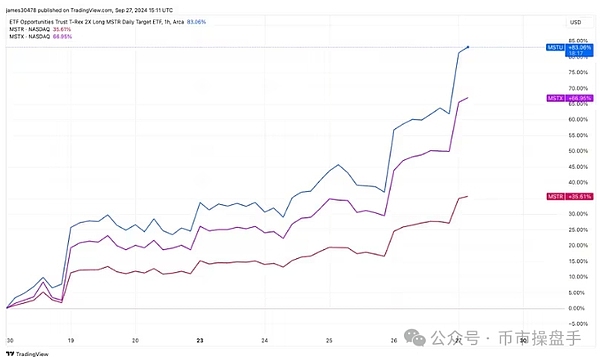
This week, the central bank created structural monetary tools for the first time to support the development of the capital market, which attracted widespread attention from the market. At present, the first phase of 500 billion yuan of swap facilities and 300 billion yuan of re-loans have been implemented, which is expected to bring up to 800 billion yuan of incremental funds to the capital market. The governor of the central bank revealed at a press conference that if the innovative monetary tools achieve the expected results, the second and third phases will be launched later. In addition, Bloomberg and Reuters recently made a rare prediction that China will launch an economic stimulus package of 2 trillion yuan. This series of measures will further expand the balance sheet of the People's Bank of China.
Regarding the impact of China's economic stimulus on the crypto market, CoinDesk analysts pointed out that over the past eight years, Bitcoin prices have been positively correlated with the size of the Chinese central bank's balance sheet, with a 30-day correlation coefficient of 0.66. Except for 2016 and the end of 2022 to 2023, the correlation has remained positive.
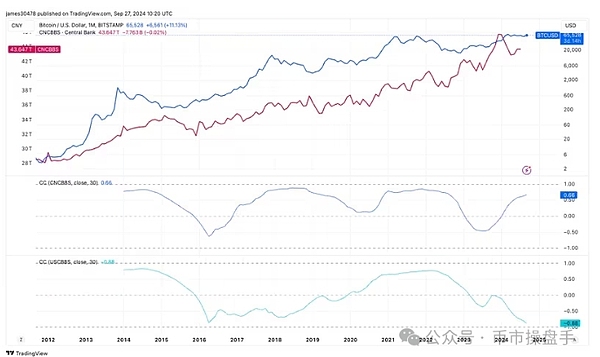 Before the last round of the Fed's interest rate cut cycle began, central banks around the world turned to loose monetary policies. After China cut its reserve requirement ratio four times in a row, the scale of social financing has seen a record increase. During this period, Bitcoin rebounded from $3,155 to $13,968, an increase of 343%. At the same time, the grand scene of Altcoin dancing in disorder also reappeared during this period. Although the current market size is incomparable to the past, it is certain that the boost to the crypto market from the East is far from over.
Before the last round of the Fed's interest rate cut cycle began, central banks around the world turned to loose monetary policies. After China cut its reserve requirement ratio four times in a row, the scale of social financing has seen a record increase. During this period, Bitcoin rebounded from $3,155 to $13,968, an increase of 343%. At the same time, the grand scene of Altcoin dancing in disorder also reappeared during this period. Although the current market size is incomparable to the past, it is certain that the boost to the crypto market from the East is far from over.
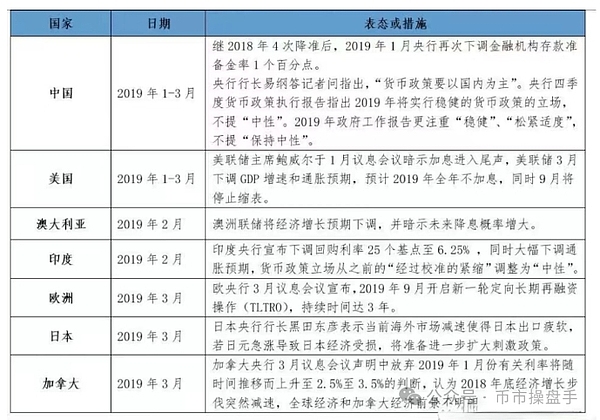
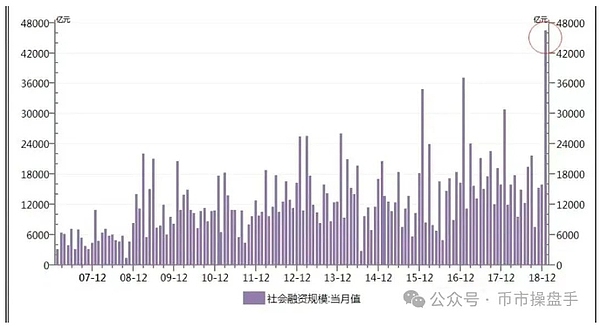
If the market in 2019 is regarded as an intermediate rebound of the bull market in 2017, then 2024 can be regarded as an intermediate rebound of the market in 2021. If calculated according to the amplitude of the rebound in 2019, the maximum increase in the range of most Altcoin can reach 2 to 5 times.







